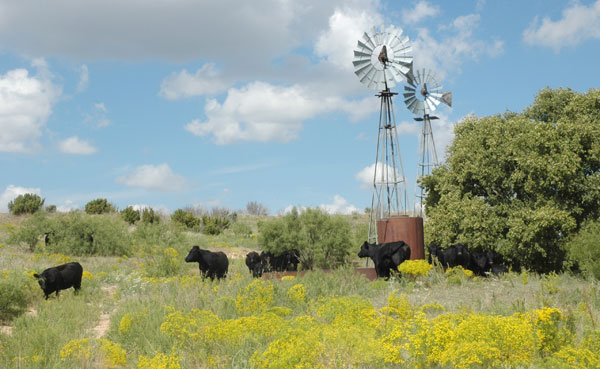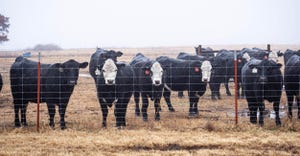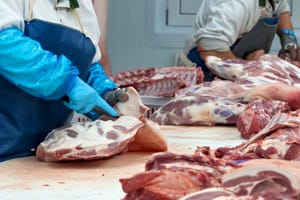Industry leaders propose updated Long Range Plan
New beef industry Long Range Plan establishes roadmap for 2016-2020.

The world, it is a’changing. And that means the beef business is changing as well. But the questions remain: How will the industry need to change, what direction will those changes need to go, how fast will cattlemen need to make those changes to keep up with a dynamic consumer marketplace, and how will the industry pay for it?
To help the beef business find answers to those questions and many more, cattle producers developed a Long Range Plan some years back. But the plan, like the industry it’s designed to guide, needs to be updated.
During the 2015 Cattle Industry Summer Conference in Denver this week, 16 beef industry leaders representing every link in the beef value chain presented a plan for meeting aggressive goals to strengthen the beef industry from 2016-2020. The Beef Industry Long Range Plan Task Force has been meeting since December, 2014.
“While the beef industry has faced many challenges, the future holds tremendous promise for the industry,” according to Don Schiefelbein, owner-operator of Schiefelbein Farms at Kimball, Minn., and task force co-chair. “The Task Force took a research-based approach to not only determine where the industry is and how we got here, but also at the trends and issues potentially impacting the beef community so that we can be most successful moving forward.”

BEEF Seedstock 100
Looking for a new seedstock provider? Use our BEEF Seedstock 100 listing to find the largest bull sellers in the U.S. Browse the Seedstock 100 list here.
The Task Force defined the mission of the U.S. beef industry as, “a beef community dedicated to growing beef demand by producing and marketing the safest, healthiest, most delicious beef that satisfies the desires of an increasing global population while responsibly managing our livestock and natural resources.”
In addition, the Task Force agreed the single most important strategic objective the industry should pursue is increasing beef demand and established a specific objective to “increase the wholesale beef demand index by 2% annually over the next five years,” which will require resources be committed in four core strategies:
Drive growth in beef exports, a strategy that focuses on gaining access to key markets and promoting the unique attributes of U.S. beef to foreign consumers.
Protect and enhance the business and political climate for beef, which begins with motivating stakeholders to become more engaged in policy concerns to improve the industry’s effectiveness in managing political and regulatory issues that threaten the overall business climate of beef production, including assuring beef’s inclusion in dietary recommendations, exploration of new production technologies, crisis management planning, developing the next generation of beef industry stakeholders and other initiatives.
Grow consumer trust in beef and beef production, including a critical focus on antibiotic stewardship, the implementation of a certification-verification program and continued investment in beef safety initiatives. The Task Force said the entire beef community must be engaged and collaborate with a broad group of industry partners to protect beef’s image.
Promote and strengthen beef’s value proposition, a strategy designed to revolutionize beef marketing and merchandising; invest in research that allows the industry to communicate beef’s nutritional benefits; capitalize on media technologies to communicate beef’s value proposition; and respond to consumer-based market signals with product improvements and increased production efficiencies.
“The overall vision of our Task Force has been straightforward,” said John Butler, CEO of Beef Marketing Group in Manhattan, Kan., and task force co-chair. “Recognizing the growing demand among the world’s middle class for high-quality protein, we want the U.S. beef industry to responsibly produce the most trusted and preferred protein in the world. At this pivotal point in the U.S. beef industry’s history we need to focus our energies and limited resources on those areas that can provide our industry the best results.”
Support for the long range planning process was provided through the Policy and Federation divisions of the National Cattlemen's Beef Association and the Cattlemen’s Beef Board. Guided by the plan, the Beef Board and Federation adapted their joint committee structure to better focus on plan recommendations to maximize the effectiveness and efficiency of beef checkoff dollars where they can and should appropriately be invested.
For the complete Beef Industry Long Range Plan 2016-2020 report or the summary, go to www.beefusa.org.
In addition to Butler and Schiefelbein, members of the Beef Industry Long Range Task Force are:
Jerry Bohn, general manager, Pratt Feeders LLC
Kim Brackett, owner-operator, Brackett Ranches
Tom Brink, owner-operator, Top Dollar Angus, Inc.
Donnell Brown, owner-operator, R.A. Brown Ranch
Barry Carpenter, CEO, North American Meat Institute
Lynn Delmore, Ph.D., meat safety and quality consultant, adjunct professor, Colorado State University
Barbara Stevenson Jackson, owner-operator, Animal Health Express and Red Rock Feeding Company
Molly McAdams, Ph.D., retail and food industry consultant
Kevin Pond, Ph.D., department head, Animal Sciences, Colorado State University
Bill Rishel, owner-operator, Rishel Angus
Brad Scott, owner-operator, Scott Brothers Dairy
Eric Smith, owner-operator, Xtra Ranch
Tim Starks, owner-perator, Cherokee Auction Market
Jay Theiler, executive director, marketing, Agri Beef Company
You might also like:
Virtual Tour: Visit the world's largest vertically integrated cattle operation
10 signs you grew up on a farm
Tips for minimizing heat stress in cattle
How to prevent foot rot In cattle
How to prevent & treat pinkeye in cattle
7 tools to win the war against cattle flies
7 U.S. cattle operations that top the charts for their stewardship efforts
About the Author(s)
You May Also Like



